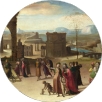|
|
The Conservation of Wall Paintings : Proceedings of a symposium... — Los Angeles, 1991![The Conservation of Wall Paintings : Proceedings of a symposium organized by the Courtauld Institute of Art and the Getty Conservation Institute, London, July 13-16, 1987 / Sharon Cather, Editor. — [Los Angeles] : The Getty Conservation Institute, 1991](/assets/i/upload/2025/the-conservation-of-wall-paintings-1991-001.jpg) ![The Conservation of Wall Paintings : Proceedings of a symposium organized by the Courtauld Institute of Art and the Getty Conservation Institute, London, July 13-16, 1987 / Sharon Cather, Editor. — [Los Angeles] : The Getty Conservation Institute, 1991](/assets/i/upload/2025/the-conservation-of-wall-paintings-1991-004.png) The Conservation of Wall Paintings : Proceedings of a symposium organized by the Courtauld Institute of Art and the Getty Conservation Institute, London, July 13-16, 1987 / Sharon Cather, Editor. — [Los Angeles] : The Getty Conservation Institute, 1991. — 149 p., ill. — ISBN 0-89236-162-X (pbk.)Contents
Miguel Angel Corzo
Foreword viii
David Park and Frank Preusser
Preface ix
Frank Preusser
Scientific and Technical Examination of the Tomb of Queen Nefertari at Thebes 1
Ornella Casazza and Sabino Giovannoni
Preliminary Research for the Conservation of the Brancacci Chapel, Florence 13
Karl Ludwig Dasser
Pretreatment Examination and Documentation: The Wall Paintings of Schloh Seehof, Bamberg 21
Claus Arendt
The Role of the Architectural Fabric in the Preservation of Wall Paintings 29
Ivo Hammer
The Conservation in Situ of the Romanesque Wall Paintings of Lambach 43
Fabrizio Mancinelli
The Frescoes of Michelangelo on the Vault of the Sistine Chapel: Conservation Methodology, Problems, and Results 57
Gianluigi Colalucci
The Frescoes of Michelangelo on the Vault of the Sistine Chapel: Original Technique and Conservation 67
S. B. Hanna and J. K. Dinsmore
Conservation of Central Asian Wall Painting Fragments from the Stein Collection in the British Museum 77
Eric M. Moormann
Destruction and Restoration of Campanian Mural Paintings in the Eighteenth and Nineteenth Centuries 87
Andreas Arnold and Konrad Zehnder
Monitoring Wall Paintings Affected by Soluble Salts 103
Mauro Matteini
In Review: An Assessment of Florentine Methods of Wall Painting Conservation Based on the Use of Mineral Treatments 137
Foreword
The Getty Conservation Institute has devoted particular attention to the problems of wall paintings conservation. Collectively, wall paintings form a record of artistic, cultural, and intellectual developments of historical significance.
The wall paintings of the tomb of Nefertari, in Egypt, have been the subject of an on-going effort for the past six years that is coming soon to a close. Projects in Dunhuang and Yungang, in China, are just now underway to systematically study the causes of deterioration in the sites and to investigate strategies for their long-term protection.
The Courtauld Institute of Art and the Getty Conservation Institute have been collaborating for six years in a wall painting conservation course, a unique three-year postgraduate-level training program.
To facilitate an international dialogue and exchange of information among conservators, scientists, and historians involved in major wall paintings conservation projects, the GCI and the Courtauld Institute of Art organized a symposium on the subject in London in 1987. This symposium was part of the GCI's ongoing efforts to promote a multidisciplinary approach to conservation, to examine issues related to conserving cultural property in situ, and to provide specialized training in conservation. By publishing the symposium's edited papers, we hope to provide a current report on significant projects and developments underway in the field of wall paintings conservation.
Miguel Angel Corzo
Director
Getty Conservation Institute
Preface
In recent decades there has been an increasing focus in all areas of conservation on an interdisciplinary approach. This has been especially true for wall paintings, where indeed a number of special factors make it essential: their physical and aesthetic unity with the architecture; their particular vulnerability, in that they constitute an extremely thin layer which is itself the interface between the support and the environment; the limitations on controlling potential agents of deterioration; and the scale and expense not only of intervention, but also of study and monitoring.
The symposium was planned to reflect this and was organized as part of the postgraduate Course in the Conservation of Wall Painting established in 1985 as a joint venture of the Courtauld Institute of Art and the Getty Conservation Institute. The curriculum of the training program is based on the philosophy shared by the two sponsoring institutions that conservation should be interdisciplinary and involve minimal intervention, requiring that causes of deterioration are adequately understood and monitored. There is, therefore, a consequent emphasis on these aspects both in the training and in the contributions to the symposium.
The organizers invited papers that would represent major programs of wall painting conservation—such as the Tomb of Nefertari, the Brancacci Chapel, and the Sistine Chapel—and would address the issues of diagnosis, documentation, and monitoring, which often tend to be overshadowed by treatment results. Thus the symposium was divided into three general categories: Planning and Diagnosis, Treatment, and Monitoring. Four papers were presented on each of the three days, leaving a considerable amount of time for discussion led by invited specialists—architects, art historians, conservators, and conservation scientists.
For Planning and Diagnosis the preliminary investigations carried out for the Tomb of Nefertari (Frank Preusser) and the Brancacci Chapel (Ornella Casazza and Sabino Giovannoni) were presented, together with the general problems of the architectural support (Claus Arendt) and documentation (Karl Ludwig Dasser). The session was chaired by Frank Preusser, and the discussants were Dr. Eve Borsook (Villa I Tatti, Florence), Mr. Martin Caroe (Caroe & Martin Architects, London), and Mr. Théo-Antoine Hermanès (Ateliers Crephart, Geneva).
Treatment was represented by papers on Central Asian paintings in the British Museum (Seamus Hanna and Jennifer Dinsmore), on the Romanesque paintings of Lambach (Ivo Hammer) and two contributions on Michelangelo's frescoes on the Sistine Chapel vault (Fabrizio Mancinelli and Gianluigi Colalucci). Mr. Paul Schwartzbaum (ICCROM) chaired the session, and Dr. Karl Ludwig Dasser, Dr. Caroline Elam (The Burlington Magazine), and Dr. Lorenzo Lazzarini (University of Rome) led the discussion.
The final session, devoted to Monitoring, was chaired by David Park and included a diverse selection of papers: the effects of soluble salts (Andreas Arnold); a historical survey of the discovery and early treatment of Roman paintings (Eric Moormann); an investigation into the effects of recent treatments of wall paintings in France (Marcel Stefanaggi and Isabelle Dangas, though not included in the present volume); and an assessment of Florentine conservation methods (Mauro Matteini). Dr. Claus Arendt, Mr. Théo-Antoine Hermanès, and Mr. John Mitchell (University of East Anglia) participated as discussants.
Although specific aspects of individual contributions were debated, much of the discussion also focused on broad issues related to the structure, administration, and funding of conservation. There was general agreement that the paradigm of a comprehensive, interdisciplinary approach tended to be realized only in a few select cases. Moreover, it was observed that monitoring wall paintings after treatment—and, perhaps more importantly, as a routine surveillance practice—rarely occurs. This was seen to be due not only to the low priority and consequent lack of funding it is given, but also to the absence of adequate parameters and guidelines for such monitoring.
In a few papers references to the literature published since 1987-88 have been added, but in general the reader is referred to the recent comprehensive bibliography by Anna Miele Pacifici in Pitture murali: tecniche, problemi, conservazione (eds. C. Danti, M. Matteini, and A. Moles; Opificio delle Pietre Dure, Florence, Centro Di; 1990:329-371).
We would like to thank those who have contributed both to the organization of the symposium and the publication of the proceedings, particularly Mrs. Marta de la Torre, Training Program Director of the Getty Conservation Institute, who proposed that the symposium be held as part ofthe teaching and participated actively in the planning. Mr. Luis Monreal, former Director of the GCI, was also closely involved in structuring the symposium, and Professor C. M. Kauffmann, Director ofthe Courtauld Institute, hosted the meeting. Sharon Cather, ofthe Courtauld Institute, has, of course, been involved in all phases, most especially in the editing of the contributions, and we owe her a considerable debt. Finally, Irina Averkieff has applied her usual high standards to the publication of the proceedings, ably assisted by Jacki Gallagher.
David Park
Director
Conservation of Wall Painting Department
Courtauld Institute of Art
Frank Preusser
Associate Director, Programs
Getty Conservation Institute
Sample pages![The Conservation of Wall Paintings : Proceedings of a symposium organized by the Courtauld Institute of Art and the Getty Conservation Institute, London, July 13-16, 1987 / Sharon Cather, Editor. — [Los Angeles] : The Getty Conservation Institute, 1991](/assets/i/upload/2025/the-conservation-of-wall-paintings-1991-012.jpg) ![The Conservation of Wall Paintings : Proceedings of a symposium organized by the Courtauld Institute of Art and the Getty Conservation Institute, London, July 13-16, 1987 / Sharon Cather, Editor. — [Los Angeles] : The Getty Conservation Institute, 1991](/assets/i/upload/2025/the-conservation-of-wall-paintings-1991-117.jpg)
Download link (pdf, yandexdisk; 6.2 MB)
The electronic version of this edition is published only for scientific, educational or cultural purposes under the terms of fair use. Any commercial use is prohibited. If you have any claims about copyright, please send a letter to 42@tehne.com.
16 мая 2025, 15:15
0 комментариев
|
Партнёры
|






Комментарии
Добавить комментарий